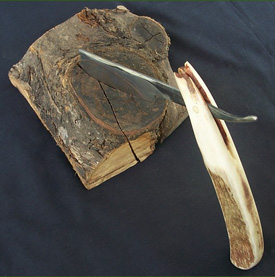
The eternal debate a lot of new straight razor users ask before buying an expensive new straight razor is: “Should I buy a shavette instead?” This article aims to help you decide which is better for you.
I will begin this article with a preamble about my personal thoughts on shavettes v. real straight razors. A shavette is NOT a straight razor. It is not even a real straight razor alternative. It was designed for the hair styling industry as a styling tool. In recent years, after straight razors were banned in many states, barbers turned to disposable shavettes to continue offering real barber shaves. New straight razor users are lured towards the shavette because of its seeming simplicity, cost, and low upkeep. The thinking is that a shavette is a stepping stone or alternative to a real straight razor. While the first may be true, the second is not. A shavette is no more an a straight razor than a Rolls Razor or DE. In fact, a Rolls Razor is closer to a straight razor than a shavette is.
The reason I say all that is because a shavette relies upon DE blades. DE blades do not perform the same as true hardened and sharpened steel. DE blades rely on teflon to cut through your beard. A straight razor relies upon the sharpening process to cut down your hairs. In addition, the shavette suffers from lack of weight. Its not something new straight razor users think about when buying a razor, but a shavette is extremely light weight. While too much straight razor makes it unwieldy, weight behind the razor helps power through hairs, making the shaving process easier. My final argument against shavettes is that they are just cheap plastic. If you buy a truly nice one, you might as well spend the money on a real straight razor.
Shavette
|
Straight Razor
|
|
|
|
- Does not hold its value well
|
|
- Limited to the available manufacturers of blades
|
- Near infinite types of edges and honing methods available
|
- Change the blades every 5 days or so
|
- Needs resharpening every 6-12 months (with an experienced user)
|
- Sharpening is as easy as changing the blades
|
- Sharpening requires an entirely new skill set. Best done by an experienced sharpener
|
- No stropping necessary! None, whatsoever. Just change out the blades when you think its getting dull
|
- Stropping, while not necessary per se, prolongs edge life so significantly it really is necessary. Stropping is also its own skill set which should be mastered by the straight razor user for optimal edge longevity. Expect 10% to 25% of normal edge life expectancy if you don’t strop your straight razor.
|
- If you damage a blade, you can just switch it out.
- Damage to the shavette itself would be fatal
|
- If you damage your blade, that’s the only one you have. While possible to perform edge repair on small chips or nicks, if a crack develops it is most likely the end of your razor. That said, serious damage is extremely rare.
|
- The cost is the same as a DE razor. While you only use half the blade, you cannot flip the razor over and use the other side.
|
|
|
|
- Typical straight razor has a 3″ blade
|
|
|
- Wide variety of scale and blade steel choices
|
The shavette was originally designed and marketed as a barber’s tool for shaving the back of people’s necks and other hair styling applications. Yet, that doesn’t mean it doesn’t work as an alternative to a straight razor. More or less a “DE on a stick”, the shavette can and is used much like a straight razor is. The shavette truly is a DE razor. It uses the same blades, and you are limited to the same exact manufacturers and blade types. Except the shavette is used in the same style as a straight razor.
The real difference between the straight razor and the shavette comes down to style. The straight razor is the “real deal” while the shavette is an imitation. The straight razor has many more options in terms of scales, point styles, grinds, steel, etc. The shavette is always going to look more or less the same and come with very similar handles. This also plays out in terms of initial investment. A shavette’s initial cost is much less than a straight razor. While the straight razor may pay for itself in the long term, the upfront investment is pretty steep in comparison. However, the straight razor tends to hold its value much better.
In terms of performance, the shavette performs more or less exactly like a DE does. The difference being that you are in control of the angle. However, other than that, your using exactly the same blades, from exactly the same manufacturers. The straight razor’s cutting performance is different according to each manufacturer, blade grind, weight, honing method, sharpener’s skill level, and steel. The straight razor also has a larger blade. Unlike a straight razor, the DE blade is limited to the manufacturer’s edge. A straight razor can be sharpened on many different types of stones, imparting slightly different edge types. You can have the straight razor sharpened on a coarser stone, a finer stone, a synthetic stone, or a natural stone. You can even use pastes or diamond sprays to finish a straight razor.
In terms of maintenance, the shavette takes the cake. All you do is replace the blade. While a straight razor doesn’t have to be stropped, it certainly cuts down the life expectancy of the edge by a lot. A strop is another added cost, but if you read our selecting a strop guide, you don’t need to splurge at all. But it is another skill set to learn; but a skill set that pays dividends in the long term.
So, in conclusion, if you want a DE which shaves similar to a straight razor, buy the shavette. If you want to shave with a straight razor, buy a straight razor. You don’t have to buy a strop initially. You don’t even have to strop it initially. Try it out, see if you like it, and if you do, invest. Otherwise, you can get most of your money back.

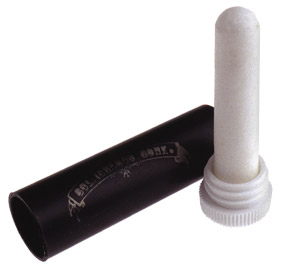


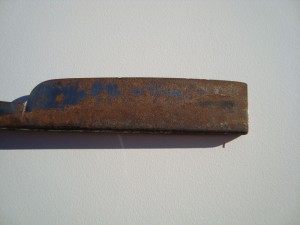
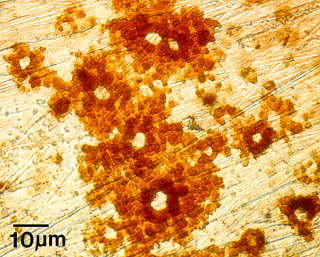




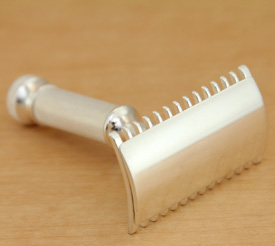 This topic comes up a lot in wetshaving discussions. Which is better, the straight razor shave or the double edge? We like to think of the comparison as between a manual v. automatic car. The manual has more control, you choose when to shift, and better mpg; whereas the automatic is simple, easy, and makes your decisions for you. Obviously, the analogy isn’t perfect, but let’s look at the differences in depth.
This topic comes up a lot in wetshaving discussions. Which is better, the straight razor shave or the double edge? We like to think of the comparison as between a manual v. automatic car. The manual has more control, you choose when to shift, and better mpg; whereas the automatic is simple, easy, and makes your decisions for you. Obviously, the analogy isn’t perfect, but let’s look at the differences in depth.